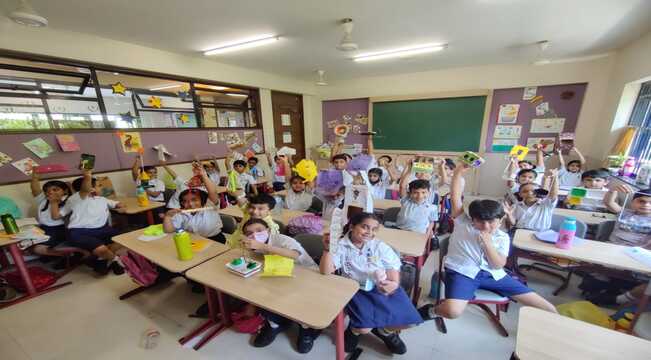By VK Khandelwal, Chairman of Selective Edutech Consultants
The Covid-19 pandemic has smothered countries in the most disruptive way possible. Just when we thought that this destruction is momentary, we proved ourselves wrong as it has stretched way too long, and to date, no one knows the way to get out of this crisis.
The Covid-19 pandemic has cast an enormous loss on education systems across the world. The lockdown of education institutions goes to cause a major (and likely unequal) interruption in learning for students, disruptions in internal assessments, and the cancellation of public assessments for qualifications or their replacement by an unsatisfactory option.
This extreme temporary chaos is felt by many families around the world where homeschooling is not only a major shock to the efficiency of parents but also the social life and learning of children.
Teaching, on an untested and unparalleled scale, is moving online. Student evaluations are now going online, with a lot of trial and error and discomfort for everyone. Many assessments have been canceled. Importantly, these interruptions will not just be a short-term issue, but may also have long-term consequences for the affected mates and are likely to broaden class inequality.
A Challenge to fulfill Digitized Education Globally during Covid-19
An important issue during this pandemic is the affordability capability of families all across the globe to afford internet packages and essential devices to access the web like that of laptops, Wi-Fi routers, tablets, etc. The statistics from the International Bank for Reconstruction and Development (2019) show that internet accessibility in high-income countries was 84 percent, middle-income countries were 48 percent, and low-income countries were only 15 percent in 2018. This internet accessibility statistics pinpoint the affordability factor of a nation.
Even with the web available throughout the country, billions of families that do not have the capacity to afford internet connection and technological devices, their children remain void of the digital education system, especially in the rural areas of a country where network and electricity issues are inevitable.
Digital Divide among children
The digital divide has never been more apparent. Far too many children lack access to a computer for learning reception. This is often an issue that may be fixed at a value that is trivial compared to the long-term economic impact of the academic disadvantage that it causes.
But we are also understanding first-hand how educational disadvantage is not nearly access to technology. Many families are struggling to support home learning, whether due to the condition of their housing, their work or caring responsibilities, or the struggle to place food on the table.
School closures disproportionately impact the foremost disadvantaged students. If we are going to reduce the long-term economic and social impact of the virus, there must be a large global effort to speculate in addressing the tutorial impact that it is caused.
Gender disparity in access to education
It has been estimated that 23.8 million children and youth [from pre-primary to tertiary] may drop out or not have access to high school next year due to the economic impact of the pandemic. According to the data available, the number of youngsters not returning to their education after the pandemic is going to be even greater, adding that girls and young women are likely to be disproportionately affected as school closures make them more susceptible to child marriage, early pregnancy, and gender-based violence.
With these challenges in mind and the fact that girls are less likely to return to school after a prolonged absence, educational authorities need to take action to prevent a devastating reversal of recent developments in education for girls and women.
Rise of the ed-tech industry across nations
While many sectors are affected by the pandemic, the web education industry is one of those few industries which are at its peak. Lots of innovations are examined within the Indian EdTech industry to balance the dynamics of teachers and students from a standard classroom to a virtual one. While these trends and innovations saw lower adoption within the pre-COVID-19 world, many existing off-the-shelf technology and innovation saw wide adoption in educational institutes recently, to make sure that the educational flow isn’t hindered. In classrooms, the relation between a teacher and student was more in the hands of the teacher; virtual classrooms have turned the scenario upside-down now. Smart classrooms are making teaching more transparent and equal for each student to provide them with a classroom-like experience.
Although this is helping the online ed-tech industry to grow at an unexpected rate, this growth is not surprising as the students have nowhere else to go. Even though the world has been set-back due to the pandemic, the progress has still accelerated, and the effect of this growth will soon be seen on the $9 trillion global education industry.
The new normal for global education
It is crucial at this point to distribute knowledge and learning resources in the maximum amount possible. For the teachers out there, connect and assist students online, attempt to create accessible learning information, and check out to develop better methods of teaching to deal with the present situations. It becomes our duty to make sure that no student misses out on a chance because of this lockdown so that whenever we get out of this situation, the uniformity among students in various branches of education is reinstated as soon as possible because uniform education is our civil right.
Corporate Comm India (CCI Newswire)






























